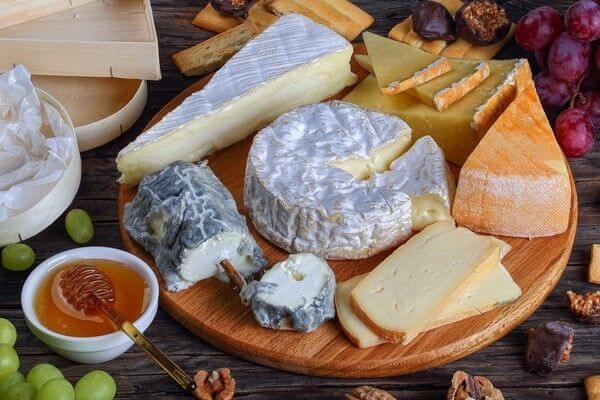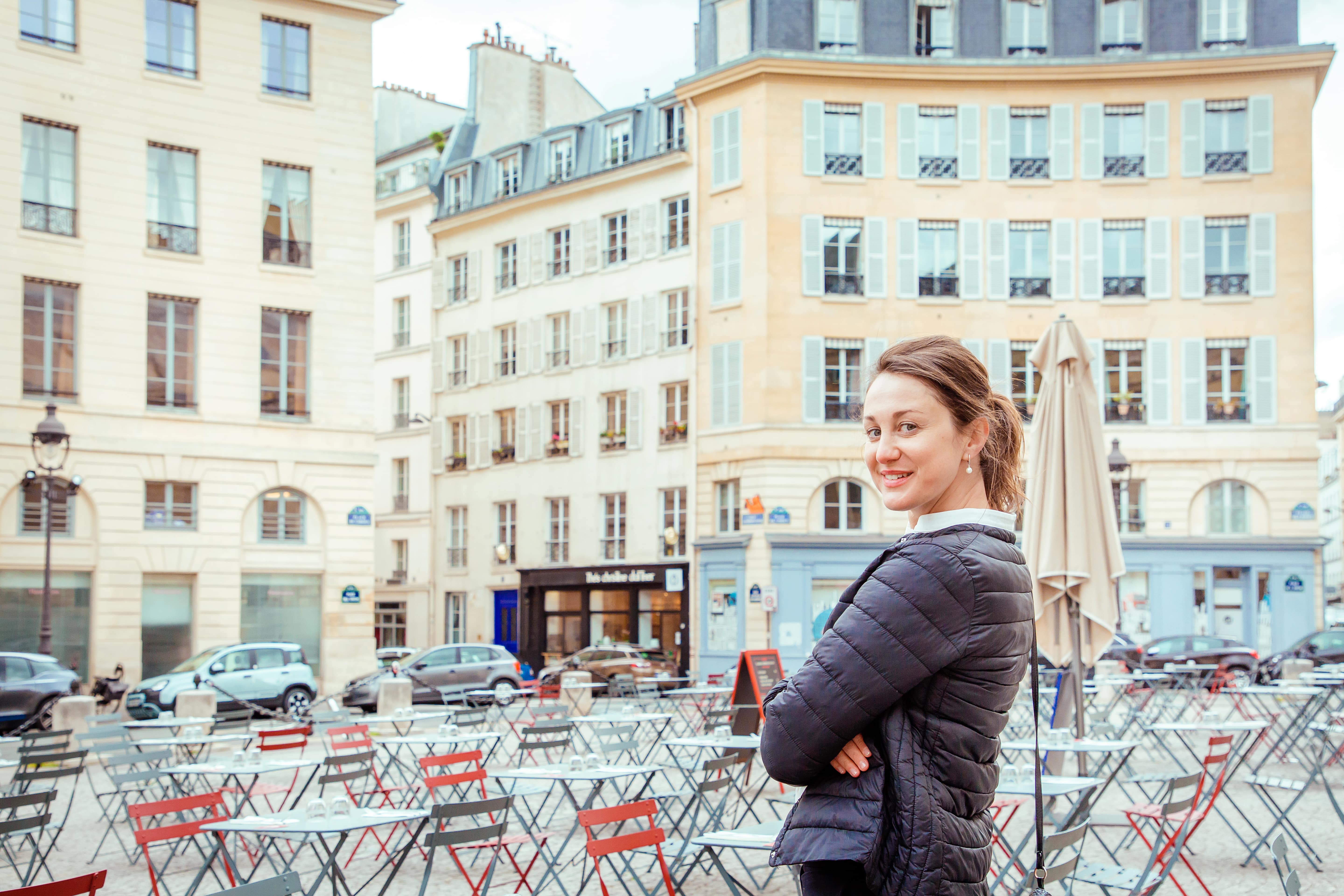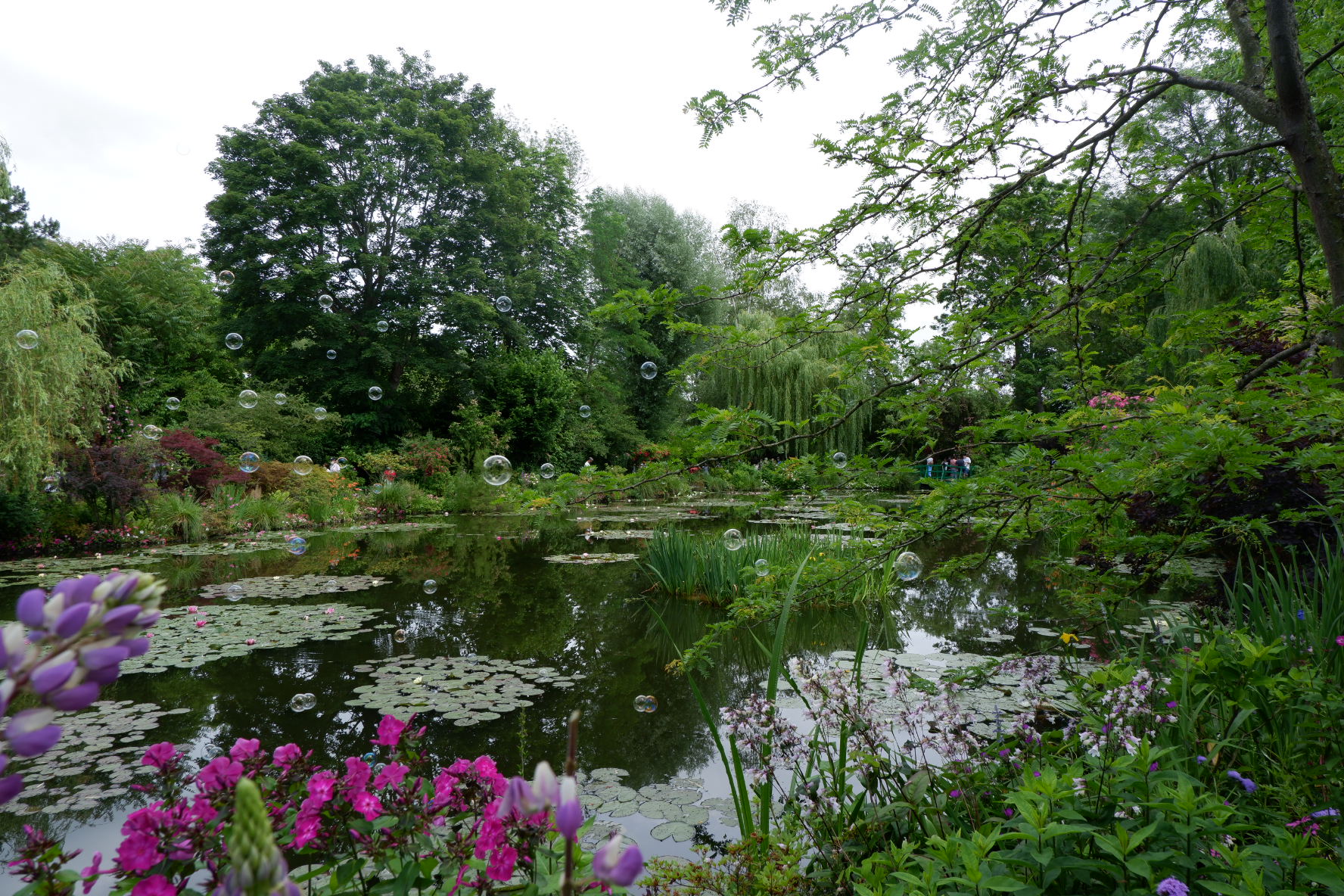L’Art de vivre
à la française
à la française
L’Art de vivre
à la française
French cheese, part 2

Me voilà! As promised here is part 2 of the story dedicated to French cheese.
Choosing your favorite kind of cheese can be compared with choosing a dear friend or a long-term partner : it takes definitely time. With no promises of love from the first sight or a long-lasting relation from the first morsel.
Besides there is always an option that your gustative match will never happen.
The French cheese revealed to me its different faces and tempers. Smelly, unpleasantly looking and even repulsive sometimes. Soft and delicate, the one with an attitude and strong personality. Provoking, tempting, piquant, savory inviting and irresistible... Each exemplar has its own character, origin, story, admirers. The list of kinds of French cheese is long and reach, - so everyone could find a perfect match.
There are hundreds of sorts of cheese in France. Every region has its own specialty: from Brest to Strasburg, from Lille to Perpignan. Charles de Gaulle, the former president of France, is said to have asked once: “how on earth you can govern a country in which there are more than 300 kinds of cheese?”
A good question, Isn’t it?
And now it’s time to get closer to texture to wake up your inner expert.
So depending on it cheese can be:
1. Fresh or white
These creamy and melting cheeses have not been refined. They are white in color and are characterized by their high water content (around 77%), mild flavor and light acidity. Here are the examples: the faisselle, the petit-Suisse, the Brousse de Provence, the Anjou crémets, the mozzarella, the feta.
2. Flower crusted cheese
The most famous are camembert, brie, neufchâtel. You’ll recognize them by their white crust covered with down and flavor of mushroom, hazelnut, and butter.
3. Soft washed-rind
This type of cheese has an orange rind and an ivory-colored paste. It can be recognized by its strong smell and its sweet flavor. This contrast makes soft, washed-rind cheese one of the most popular varieties. Here we have Epoisses, Maroilles, Pont-l'Evêque, Livarot.
4. Blue-veined
These are mountain cheeses made from cow's or sheep's milk with paste marbled with bruises. Among the most famous are Roquefort, Bleu d'Auvergne, Fourme d'Ambert.
5. Uncooked pressed cheese
This family includes around thirty kinds of cheese in France. Often made in monasteries from cow or sheep milk. Uncooked pressed cheese has not been heated to more than 50 ° C. Here we find Mimolette, Tomme de Savoie, Cantal, Salers, Raclette, Reblochon.
6. Cooked pressed cheese
Cooked pressed cheeses have a very hard-paste because the curds are pressed for a long time during draining. They can be recognized by their more or less large holes and fruity aroma. Here we have Abondance, Comté, Beaufort, Gruyère; Emmental.
7. Goat cheese
These are 100% kinds of cheese made from goat milk or mixed with cow's milk (with at least 50% goat milk). The dough may be slightly runny or dry and the crust may be ashy, flowery or natural. These include Chabichou du Poitou, Rocamadour, Sainte-Maure de Touraine, Crottin de Chavignon.
8. Processed cheese
They have the distinction of being made from a cooked or uncooked pressed cheese or a mixture of cheeses that have been melted. They come in the form of aperitif cubes or spreadable cheeses. Here you’ll find Cancoillotte, Confit d'Eépisses, Fort de Béthune.
And here you’ve got the most important steps of its appearance.
Step 1. Curdling.
This operation consists in separating the whey from the curd (the base of the cheese). To do this, the cheese maker uses rennet or fig juice. In the case of white cheeses, coagulation occurs under the effect of acidification.
Step 2. Drainage
This step takes some time in order to evacuate the proportion of excess water in the curd. It can be done naturally by putting the curd in a cloth and letting its weight exert pressure or using a press
Step 3. Salting
Salting is done by rubbing or by immersing the cheese in a brine bath.
By the way, did you know that it is salt that gives the cheese its taste, texture and appearance?
Step 4. Molding
It consists in giving a visual form to the cheese.
Step 5. Refining
This process can be compared with the elevation of wine in bottles. It the maturation of cheese. Its duration can be from a few weeks to several months or a few years (depending on the cheese) However, the longer the ripening, the more pronounced the cheese is. This step is done in special ventilated room.
One more important thing. You will no doubt find the following abbreviations PDO , AOP / AOC while choosing a good cheese in France. It is good to know its meaning. So, PDO means Protected Designation of Origin and it aims to protect the quality of products manufactured in a certain geographical area. It must respond to specific manufacturing rules and expertise.
The PDO is the European equivalent of the French AOC and means - Appellation d'Origine Contrôlée . In October 2016, France had 45 AOC / AOP (Appellation d'Origine Protégée) cheeses, including 28 made from cow's milk, 14 made from goat milk and 3 made from sheep's milk.
Today in Paris you can find numerous cheese bars for the degustation. Special food tours are organized in order to discover different flavors of this product and enjoy its variety.
Here some good addresses not to miss:
1. La Vache dans les vignes, 46 Quai de Jemmapes – this one is a small boutique cellar along the Canal Saint-Martin. With a cozy atmosphere and delicious cheese degustation. Only 15 places are available.
2. 75 010 Paris, Salon du fromage Hisada - if you are looking for an original place for your wine and cheese tasting in Paris, try the salon du fromage Hisada.
3. 47 rue de Richelieu, 75 001 Paris, Le Claque-fromage, 49 Avenue Trudaine, 75009 Paris - Without a doubt it is one of the best addresses in the capital to enjoy a good cheese platter, accompanied by a glass of wine.
4. Les Petits Crus, 13 Rue St Sabin, 75 011 Paris - In this small brasserie, only organic wines and cheeses are offered, all in a relaxed nice atmosphere.
So I hope to have left you with your mouth full of spittle and heart full of inspiration to visit France for the cheese tasting!
And me, I’ll meet you soon for the next voyage into the world of Art de vivre à la française !
Dal "L'Arte di vivere alla francese"
Il Fromaggio, la parte 2.
Me voilà! Ho promesso – fatto : ecco la seconda parte della storia dedicata al formaggio francese.
Secondo me la scelta del tuo formaggio preferito può essere paragonata alla scelta di un caro amico o di un partner a lungo termine. Ci vuole il tempo e la ricerca. Senza la promessa d'amore a prima vista o della lunga relazione dal primo boccone.
E c'è sempre un'opzione che la relazione finisca prima di iniziarsi.
Il formaggio francese mi ha rivelato le sue diverse faccie e temperamenti: puzzolente, dall'aspetto sgradevole e talvolta persino ripugnante. Morbido e delicato, quello con un charattere e una forte personalità. Provocante, piccante, invitante, sapido e irresistibile ... Ogni esemplare di esso ha la sua lingua, origine, storia, ammiratori.
L'elenco dei formaggi francesi è lungo e ricco, nel modo ogni uno possa trovare un perfetto unione gustativo.
Ci sono centinaia di tipi di formaggi in Francia. Ogni regione ha la sua specialità: da Brest a Strasburgo, da Lille a Perpignan. Si dice che Charles de Gaulle, l’ex presidente della Francia, abbia chiesto una volta: "come mai può governare un paese in cui ci sono più di 300 tipi di formaggi?" Non so sinceramente cosa ha risposto l’ex presidente, perche questa domanda la trovo piuttosto retorica.
Noi invece avviciniamoci alla testura, svegliando in questo modo un esperta dentro di se. Allora secondo la struttura il formaggio può essere:
1. Fresco o bianco.
Questi formaggi cremosi e fondenti non sono stati raffinati. Sono di colore bianco e si caratterizzano per l'elevato contenuto di acqua (circa il 77%), il sapore delicato e la leggera acidità. Ecco alcuni esempi: la faisselle, la petit-Suisse, la Brousse de Provence, i crémets dell'Anjou, la mozzarella, la feta.
2. Con la crosta morbida e fiorita
I più famosi sono il camembert, brie, neufchâtel. Li riconoscerai per la loro crosta bianca ricoperta di piumino e aroma di funghi, nocciole e burro.
3. Il formaggio a crosta morbida
Questo tipo di formaggio ha una buccia di colore d'arancia e una pasta color avorio. Può essere riconosciuto dal suo forte odore e dal suo sapore dolce. Questo contrasto rende il formaggio a pasta molle una delle varietà più popolari. L’Epoisses, Maroilles, Pont-l'Evêque, Livarot - sono tra i più noti.
4. A pasta erborinata
Si tratta di formaggi di montagna a base di latte di mucca o di pecora con pasta marmorizzata di lividi. Tra i più famosi ci sono Roquefort, Bleu d'Auvergne, Fourme d'Ambert.
5. Il formaggio non cotto premuto
Questa famiglia comprende una trentina di formaggi in Francia. Spesso prodotto in monasteri con latte di mucca o di pecora. I formaggi pressati non cotti che non sono stati riscaldati a più di 50 ° C. Qui troviamo Mimolette, Tomme de Savoie, Cantal, Salers, Raclette, Reblochon.
6. Il formaggio pressato cotto
I formaggi pressati cotti hanno una pasta molto dura perché i cagliati vengono pressati a lungo durante lo scarico. Possono essere riconosciuti dal loro aroma fruttato. Qui abbiamo Abondance, Comté, Beaufort, Gruyère, Emmental.
7. I formaggi di capra
Si tratta di formaggi al 100% a base di latte di capra o mescolati con latte di vacca (con almeno il 50% di latte di capra). L'impasto può essere leggermente gocciolante o secco e la crosta può essere cinerea, fiorita oppure naturale. Questi includono Chabichou du Poitou, Rocamadour, Sainte-Maure de Touraine, Crottin de Chavignol.
8. I formaggi lavorati
Hanno la particolarità di essere ottenuti da un formaggio pressato cotto o crudo o da una miscela di formaggi che sono stati sciolti. Si presentano spesso sotto forma di cubetti di aperitivo o formaggi spalmabili. Qui troverai Cancoillotte, Confit d'Eépisses, Fort de Béthune.
Ed ecco anche i passaggi più importanti della apparizione del formaggio.
Passaggio 1. Cagliatura.
Questa operazione consiste nel separare il siero di latte dalla cagliata (la base del formaggio). Per fare questo, il casaro usa succo di caglio o di fico. Nel caso dei formaggi bianchi, la coagulazione si verifica sotto l'effetto dell'acidificazione.
Passaggio 2. Drenaggio
Questo passaggio richiede del tempo per evacuare la percentuale di acqua in eccesso nella cagliata. Può essere fatto naturalmente mettendo la cagliata in un panno e lasciando che il suo peso eserciti una pressione o usando una pressa.
Passaggio 3. Salatura
La salatura viene effettuata immergendo il formaggio in un bagno salato. Sapevi che è la salatura che conferisce al formaggio il suo sapore, la sua consistenza e il suo aspetto?
Passaggio 4. Creazione della forma.
Consiste nel dare una forma al formaggio.
Passaggio 5. Raffinazione
Questo processo può essere paragonato all'elevazione del vino nelle bottiglie. Cosi detta maturazione del formaggio. La sua durata può variare da alcune settimane a diversi mesi o alcuni anni (dipende dal formaggio)
Tuttavia, più lunga è la maturazione, più pronunciato è il formaggio. Questo passaggio viene eseguito in una stanza ventilata con una certa temperature e umidità.
Un'altra cosa importante da dire. Senza dubbio troverai le seguenti abbreviazioni DOP, AOP / AOC quando scegli un formaggio. È bene conoscerne il significato.
Quindi DOP significa denominazione di origine protetta e mira a proteggere la qualità dei prodotti fabbricati in una determinata area geografica. Deve rispondere alle specifiche regole e competenze di produzione.
Il DOP è l'equivalente europeo del mezzo francese AOC - Appellation d'Origine Contrôlée.
Nell'ottobre 2016, la Francia aveva 45 formaggi AOC / AOP (Appellation d'Origine Protégée), di cui 28 a base di latte di vacca, 14 di latte di capra e 3 di latte di pecora.
Oggi a Parigi puoi trovare numerose barrette di formaggi per la degustazione. Vengono organizzati i tour gastronomici per scoprire diversi sapori di questo prodotto eccezionale.
Ecco alcuni indirizzi da non perdere:
1. La Vache dans les vignes, 46 Quai de Jemmapes - questa è una piccola cantina boutique lungo il Canal Saint-Martin. Con un'atmosfera molto accogliente.
Sono disponibili solo 15 posti però.
2. 75 010 Parigi, Salon du fromage Hisada - Se stai cercando un posto originale per la tua degustazione di vini e formaggi a Parigi, prova il salon du fromage Hisada.
3. 47 rue de Richelieu, 75 001 Parigi, Le Claque-Fromage, 49 Avenue Trudaine, 75009 Parigi - Senza dubbio, uno dei migliori indirizzi della capitale per gustare un buon piatto di formaggi, accompagnato da un bicchiere di vino.
4. Les Petits Crus, 13 Rue St Sabin, 75 011 Paris - In questa piccola brasserie, vengono offerti solo vini e formaggi biologici, tutto questo in un'atmosfera rilassata.
Quindi spero d’avervi lasciato con la bocca piena di saliva! Spero anche che troverai qualcosa di delizioso nel tuo frigo per accontentarti, può darsi anche un po di formaggio locale.
E noi ci incontreremo per il nostro prossimo viaggio atraverso l’Art de vivre à la française !
- Tags:
- French cheese






